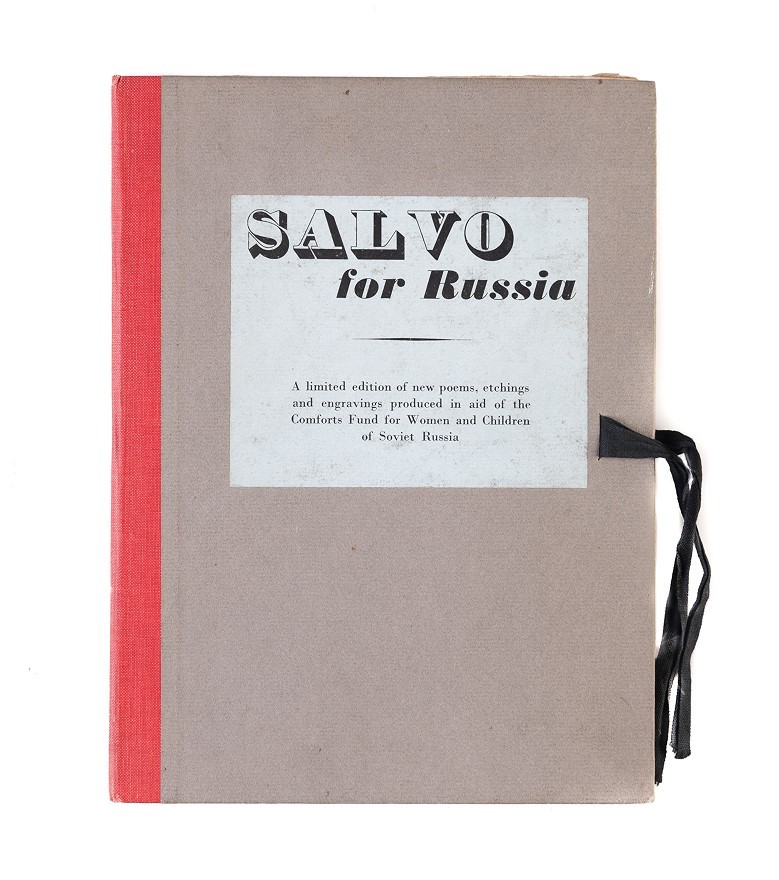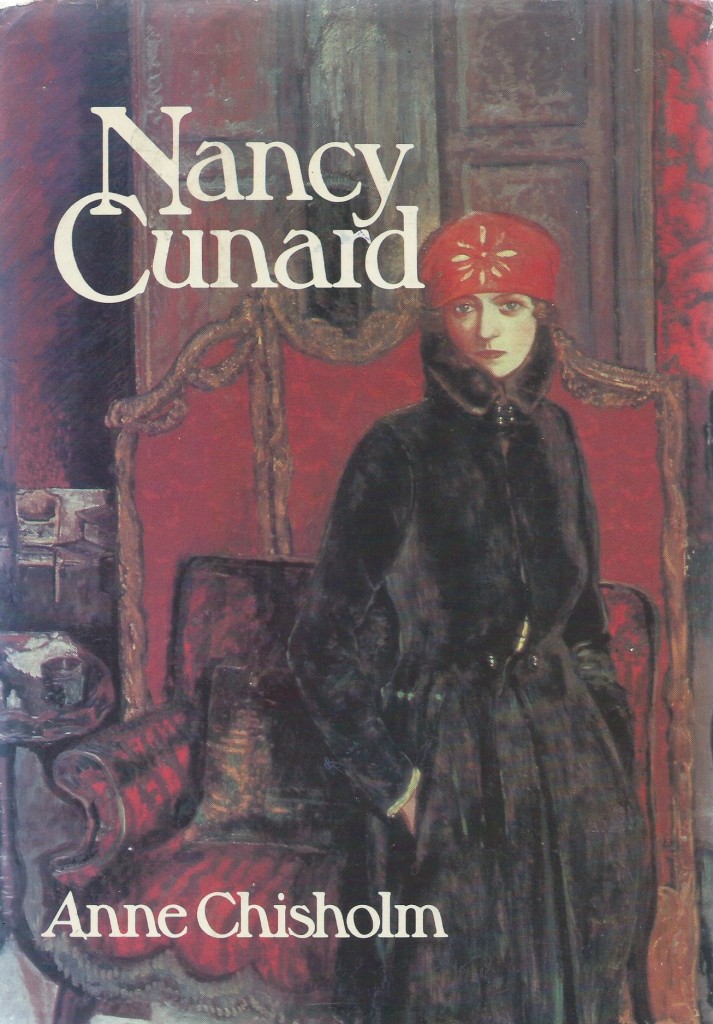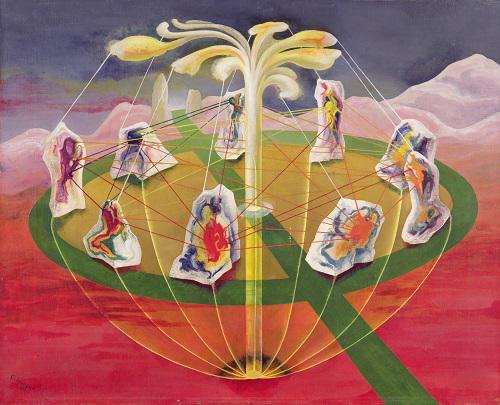A few weeks ago, as part of my research on Nancy Cunard as an uncommon viewer – early research sorties into the art worlds in which she moved, lived and worked – the Librarian at Washington State University sent me some reproductions of items in their archive: namely correspondence between Nancy Cunard and Nina Hamnett. One, a postcard to Hamnett written in 1942 when Cunard was living in London is an invitation for them to meet up, go for a drink, and discuss working together on a project that would combine Hamnett’s illustrations with Cunard’s poetry – a project that seems not to have ever come off. However, the postcard also mentions “Salvo for Russia” which Cunard calls a ‘circular’ that had come out earlier in the year [April, 1942]. All had sold, but Cunard writes: “In case you’ve not seen it will bring Thursday, a lovely work of etchings at 2 guineas per copy… Mary Wykeham and John [Banting], and others”.
In her biography of Nancy Cunard, Anne Chisholm notes that Salvo for Russia
“contained poems, etchings and engravings to be sold to help the Soviet war effort.”
The Imperial War Museum records:
This portfolio of 10 prints was produced to provide aid to Soviet Russia, which in 1942 was fighting against the invasion by Nazi Germany. John Piper explores the impact of the Second World War on the British landscape and architecture in a characteristic Neo-Romantic work. John Buckland Wright contributes a quintessentially Surrealist print. The portfolio demonstrates the importance and variety of printmaking in the mid-twentieth century British art scene.
But it is to the Ashton Rare Books website we must go for more interesting information:
Cunard, Nancy and John Banting (Eds.) ~ Salvo for Russia : A Limited Edition of New Poems, Etchings and Engravings Produced in Aid of the Comforts Fund for Women and Children of Soviet Russia.
Privately Printed, London : 1942
and they describe it as:
Nancy Cunard’s very scarce portfolio ‘Salvo for Russia’ and one of the few major works of English Surrealism.
emphasising further:
Published by Nancy Cunard as ‘a limited edition of new poems, etchings and engravings’ to raise money for the ‘Comforts Fund for Women and Children of Soviet Russia’ after the invasion by the Germans, this is one of the very few British purely Surrealist publications.
Another Rare Books shop, Maggs of Bloomsbury, tell that only 100 copies of the ‘circular’ were published, and that it included:
…four poems by Cecily Mackworth, James Law Forsyth, J. F. Hendry and Nancy Cunard, along with ten etched and engraved plates by some of the leading British surrealists of the mid-20th century, including John Banting, Ithell Colquhoun, Roland Penrose, John Piper and John Buckland Wright, along with others by Mary Wykeham, C. Salisbury, Julian Trevelyan, Geza Szobel and Dolf Reiser.
John Banting’s “The Spirit of Appeasement” (other versions are called “Janus” and “The Eye of the World”).
In “Surrealism in Britain”, Michel Remy describes Janus as: “the two-faced divinity of war and peace… a monument to indifference.” The image shows the two forces of war and peace, bony and skeletal, as “inextricably entangled” – the world trapped within. Moreover, Remy says that Salvo for Russia, published just after Hitler’s surprise invasion of the USSR, was the “only instance of actual collaboration between surrealists and Marxists”.
Certainly Nancy Cunard’s poem “Russia – USSR” calls on the mighty strength of the Soviet Union; the first part reads:
“I see a man standing sharp against skyline, a woman on the horizon,
Born in a vast October, guarding the East and West of life.”
What is fascinating is that such a unique collaboration of artists and poets came about in London 1942.
The Ashton Rare Books website includes all the various mages, including “Attack” by Mary Wykeham, who Nancy Cunard mentions in the postcard and of whom very little – at least that I can find online – seems to be known.

Also, there is a version – titled “Zodiac” – of Ithell Colquhoun’s “Dance of the Nine Opals” [1942; private]:
inspired by the Merry Maidens, a stone circle near Penzance, and her increasing fascination with Celtic lore and magic.
The original of Julian Trevelyan’s image from Salvo for Russia is in the Tate collection and portrays the utter dehumanisation of war:

*
All in all, then, Salvo for Russia, albeit barely chronicled, is an extraordinary production.
***



